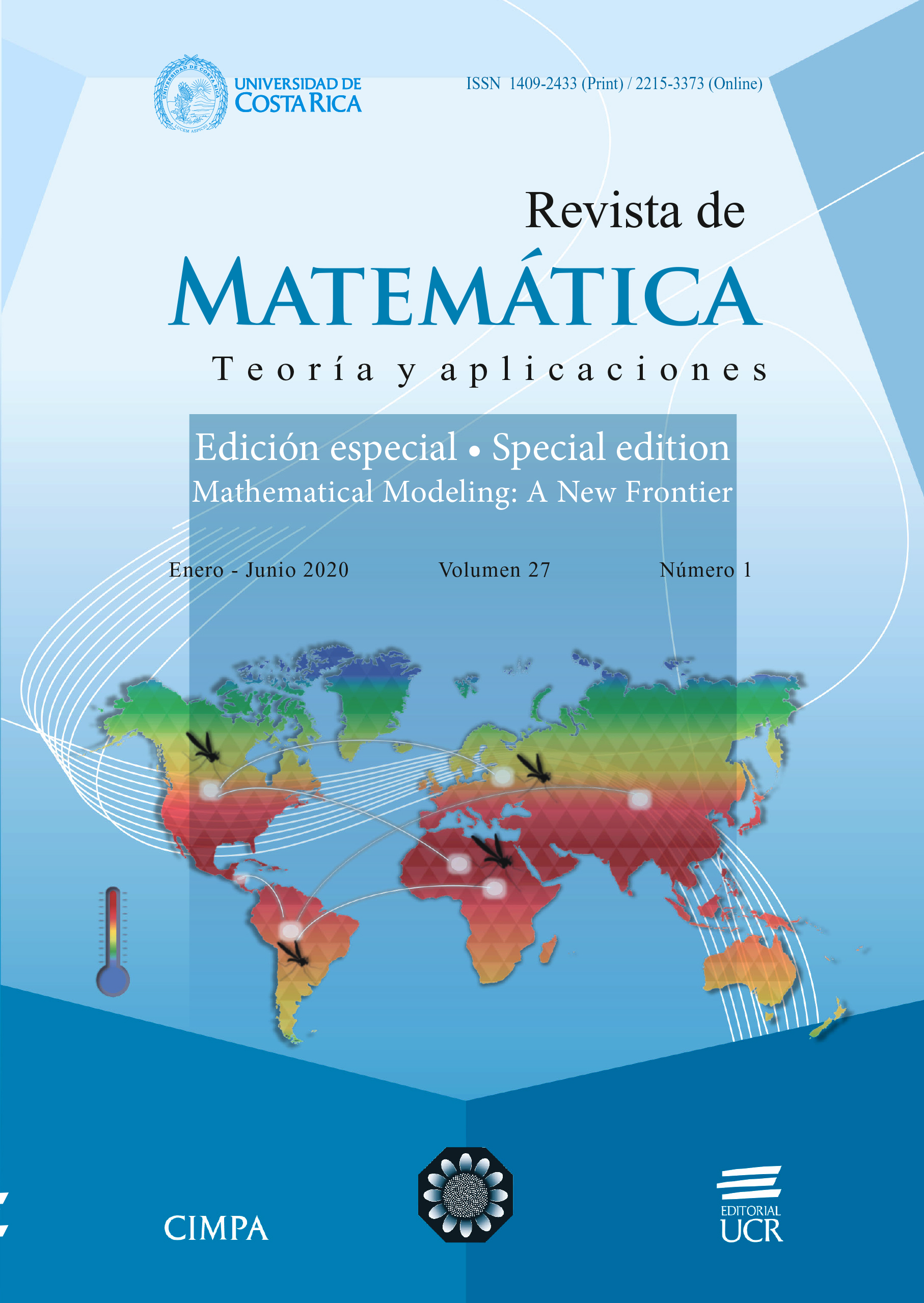Abstract
We construct an epidemic model for the transmission of dengue fever with an early-life stage in the vector dynamics and age-structure within hosts. The early-life stage of the vector is modeled via a general function that supports multiple vector densities. The basic reproductive number and vector demographic threshold are computed to study the local and global stability of the infection-free state. A numerical framework is implemented and simulations are performed.
References
F. Brauer, C. Castillo-Chavez, A. Mubayi, S. Towers, Some models for epidemics of vector-transmitted diseases, Infect. Dis. Model. 1(2016), no. 1, 79–87. doi: 10.1016/j.idm.2016.08.001
Centers for Disease Control and Prevention, Dengue, https://www. cdc.gov/Dengue/.
L. Esteva, C. Vargas, Analysis of a dengue disease transmission model, Math. Biosci. 150 (1998), no. 2, 131–151. doi: 10.1016/ S0025-5564(98)10003-2
L. Esteva, C. Vargas, A model for dengue disease with variable human population, J. Math. Biol. 38(1999), no. 3, 220–240. doi: 10.1007/ s002850050147
Z. Feng, J.X. Velasco-Hernández, Competitive exclusion in a vector-host model for the dengue fever, J. Math. Biol. 35(1997), no. 5, 523–544. doi: 10.1007/s002850050064
D.J. Gubler, Resurgent vector-borne diseases as a global health problem, Emerging Infect. Dis. 4(1998), no. 3, 442–450. doi: 10.3201/ eid0403.980326
E. Harris, E. Videa, L. Pérez, E. Sandoval, Y. Téllez, M.L. Pérez, R. Cuadra, J. Rocha, W. Idiaquez, R.E. Alonso, M.A. Delgado, L.A. Campo, F. Acevedo, A. Gonzalez, J.J. Amador, A. Balmaseda, Clinical, epidemiologic, and virologic features of dengue in the 1998 epidemic in Nicaragua, Am.J.Trop.Med.Hyg.63(2000),no.1-2,5–11.doi: 10.4269/ajtmh. 2000.63.5
C.A.Manore,K.S.Hickmann,S.Xu,H.J.Wearing,J.M.Hyman,Comparing dengue and chikungunya emergence and endemic transmission in A. aegypti and A. albopictus, J. Theor. Biol. 356(2014), 174–191. doi: 10. 1016/j.jtbi.2014.04.033
D. Murillo, S. Holechek, A. Murillo, F. Sanchez, C. Castillo-Chavez, Vertical transmission in a two-strain model of dengue fever, Letters in Biomathematics 1(2014), no. 2, 249–271. doi: 10.1080/23737867.2014. 11414484
F. Sanchez, L. Barboza, D. Burton, A. Cintrón-Arias, Comparative analysis of dengue versus chikungunya outbreaks in Costa Rica, Journal Ricerche di Matematica 67(2018), no. 1, 163–174. doi: 10.1007/ s11587-018-0362-3
F. Sanchez, M. Engman, L. Harrington, C. Castillo-Chavez, Models for dengue transmission and control, in: A. Gumel, C. Castillo-Chavez, D.P. Clemence, & R.E. Mickens (Eds.) Mathematical studies on human disease dynamics. Emerging paradigms and challenges (Snowbird, Utah, 2005), Contemp. Math. 410(2006), 311–326. doi: 10.1090/conm/ 410/07734
F. Sanchez, D. Murillo, C. Castillo-Chavez, Change in host behavior and its impact on the transmission dynamics of dengue, in: R.P. Mondani (Ed.) BIOMAT 2011, World Scientific, Singapore, 2012, pp. 191–203. doi: 10. 1142/9789814397711_0013





